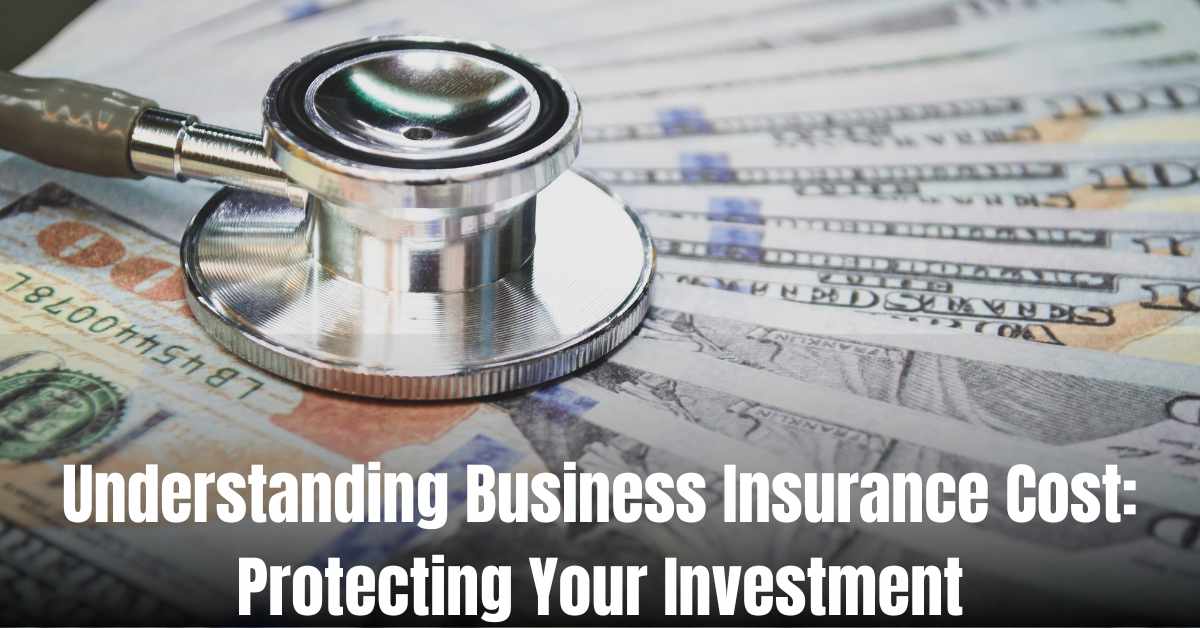Protect your investment with business insurance. Learn about the different types of insurance, factors affecting insurance costs, premiums and deductibles, and how to effectively compare insurance quotes. Find the best insurance solution for your business and ensure ongoing protection for your investment.
In today’s business landscape, protecting your investment is crucial. Business insurance plays a vital role in safeguarding your company’s assets and mitigating risks. Understanding the cost factors involved in obtaining adequate coverage is essential for every business owner. In this blog post, we will explore the different types of business insurance, factors affecting insurance costs, the concept of premiums and deductibles, and how to compare insurance quotes effectively.
Types of Business Insurance
To begin, let’s take a look at the various types of business insurance available. These include general liability insurance, property insurance, professional liability insurance, workers’ compensation insurance, and cyber insurance. Each type of insurance protects different aspects of your business. General liability insurance covers third-party bodily injury or property damage claims, while property insurance protects your physical assets. Professional liability insurance is designed for businesses that provide services, protecting against claims of negligence or errors. Workers’ compensation insurance provides coverage for employees who suffer work-related injuries or illnesses. Lastly, cyber insurance safeguards your business from cyber-attacks and data breaches.
Factors Affecting Business Insurance Cost
The cost of business insurance is influenced by several factors. These include the industry you operate in, the size of your business, location, revenue, claims history, and coverage limits. Insurers assess these factors to determine the premium you’ll pay. For example, businesses in high-risk industries such as construction or healthcare may have higher insurance costs due to the increased likelihood of claims. Similarly, businesses located in areas prone to natural disasters may face higher premiums. Revenue and claims history also play a role, as businesses with higher revenue or a history of frequent claims may be considered higher risk. Understanding these factors can help you anticipate and manage your insurance costs effectively.
Understanding Premiums and Deductibles
Insurance premiums are the amount you pay for your insurance coverage. They are calculated based on various factors, including the level of risk associated with your business. Premiums and deductibles have an inverse relationship – higher deductibles result in lower premiums, while lower deductibles lead to higher premiums. It’s important to choose the right deductible amount that balances affordability and coverage. By carefully assessing your business’s risk tolerance and financial capabilities, you can select a deductible that suits your needs. Additionally, bundling policies or implementing risk management strategies can help manage premiums effectively.
Comparing Insurance Quotes
When it comes to obtaining business insurance, it’s crucial to compare quotes from different providers. This allows you to evaluate coverage options, policy terms, and exclusions. It’s also important to consider the reputation and financial stability of insurance companies. To make informed decisions, utilize resources or tools that assist in comparing quotes. These tools can provide side-by-side comparisons of different policies, helping you identify the best insurance solution for your business.
Conclusion
In conclusion, business insurance is a vital investment for protecting your company’s assets and mitigating risks. Understanding the cost factors involved in obtaining adequate coverage is essential for every business owner. By assessing your specific needs, evaluating insurance quotes, and consulting with insurance professionals, you can find the best insurance solution for your business. Remember to regularly review and update your insurance coverage as your business evolves to ensure ongoing protection for your investment.

